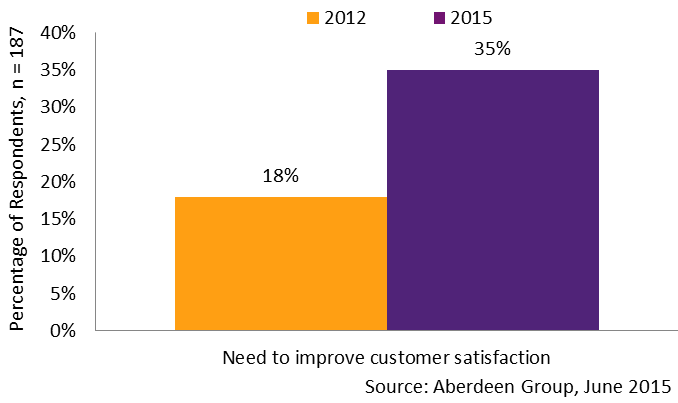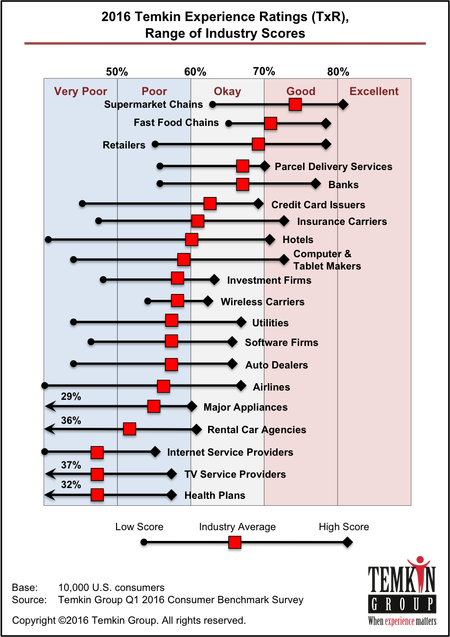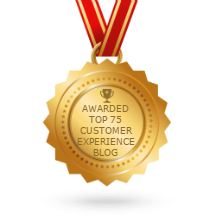For many power and utility companies, achieving operational excellence has long taken precedence over the customer experience (CX). This has been a logical choice. The services power and utility companies provide are vital—so ensuring constant uptimes and managing a dispersed workforce has been mission-critical. Customer experience for power and utilities has taken a backseat to operational priorities.
However, today’s power and utility industry is facing a radical shift. As other industries have accelerated their CX practices, customers have come to expect similar high levels of service from theirpower and utility service providers.
For years, consumers have been satisfied with stable power costs and avoiding power outages, but now they demand better and more tailored service. Whether large or small, regulated or unregulated, utilities must ask themselves how they will define the right experience for their customers, balancing customer needs and financial limitations. (Source: PWC)
And more power and utility firms are embracing the importance of CX. Between 2012 and 2015, the number of utilities identifying a need to improve customer satisfaction nearly doubled, according to research from the Aberdeen Group.
Image Source: IBM
To keep pace with customer demands, power and utility companies need to institute and evolve CX programs. Those that take strides early can stand out as customer-focused leaders and build positive perceptions among their customer bases.
Without a doubt, customer experience for power and utility companies should be a top-of-mind issue for every industry executive. To map next steps in their customer strategy, power and utility companies can learn from and use what CX experts have to say about CX in their industry.
Insight #1: Opportunities Exist in Customer Experience for Power and Utility Companies That Want to Lead
Despite broader industry-wide focus on CX, utilities earn lower-than-average CX ratings from customers. In the most recent annual Temkin Experience Ratings, utilities companies earned an overall “poor” CX rating.
Image Source: Temkin Group
Other industries that fell in the “poor” category include airlines, auto dealers, and wireless carriers—all of which have a widespread reputation for subpar customer service. Traditional CX leaders—supermarkets, fast food chains, and retailers—hold the top three spots in the 2016 rankings.
Another concerning trend: utilities lost ground from 2015 to 2016, with a five-point drop in the industry’s overall score.
What does this mean for customer experience for power and utility companies? Despite customers’ desire for better experiences, some companies are still missing the mark.
Those that want to lead in CX can capitalize on this unique opportunity and differentiate themselves in the marketplace.
Insight #2: Focusing on CX Drives Superior Performance
The power and utility industry as a whole has room to grow in customer experience. However, the current CX leaders in the sector are already seeing strong performance gains.
A study by the Aberdeen Group analyzed key performance metrics for customer experience for power and utility companies. The top 20%–the best-in-class–had remarkable results, when compared to the remaining 80%. Best-in-class programs achieved:
- 51% higher customer retention rates
- 23% increase in customer profit margins, year-over-year
- 24% improvement in response times to customer needs, year-over-year
In addition, the top performers had 44% greater growth in annual company revenues, year-of-over year.
The case for stronger emphasis on customer experience for power and utility companies is clear. More satisfied and loyal customers and financial growth are the benefits gained by those with solid CX programs.
Insight #3: There is No One Perfect Experience for Power and Utility Customers
While power and utility companies may be able to look to recognized CX leaders in other industries for ideas, they need to recognize the demands of their unique business environment.
As PwC explains, utilities should not assume that there is a single, best way to approach customer strategy:
There is no one right customer experience for the industry. The best customer experience offering will depend on the specifics of the company strategy, its business model, and the environment in which it operates. In other words, a company must tailor its customer strategy to its own realities.
All power and utility companies must balance operational costs with service levels—all in the context of regulatory mandates. In addition, some utility firms face competitive pressures. Some utilities may want to stick with a traditional approach that emphasizes operational efficiency. Others may choose to offer multiple service level and value-added features for customers.
Whichever path they choose, companies need processes and tools to evaluate the customer experiences they deliver. They need to collect customer feedback and use it to shape the direction of their customer strategy. Customer experience for power and utility companies is fast becoming a necessary reality of doing business.
Insight #4: Measuring Customer Experience for Power and Utility Companies is Vital
Gathering customer feedback is the cornerstone of an effective CX program. As the Utility Customer Research Consortium (UCRC) notes, utilities have made initial forays into collecting customer satisfaction feedback:
Almost every utility includes customer satisfaction scores as a key component of their corporate scorecards as a measure of their performance vis-à-vis the customer. There are years of data for the utility sector as well as other sectors for purposes of benchmarking and comparability. Key stakeholders, especially regulators, but also investors, accept these metrics as meaningful and credible. Customer satisfaction metrics serve as a proxy for overall customer impressions.
While most power and utility companies have practices to collect customer feedback on a periodic basis, a more proactive approach can yield great benefit. CX leaders in other industries use surveys gather feedback after every customer interaction—and charge frontline managers with resolving any negative responses. Power and utility companies can embrace this model.
UCRC is also advocating a move towards what it calls “alternative customer metrics.” These metrics—which focus on measuring customer engagement—can complement insights gained through traditional customer satisfaction surveys.
The reason for this shift? UCRC anticipates increasing competition, coupled with customers’ desire for energy efficiency and alternative energy options, such as solar power. This could cause a move away from the traditional monopoly environment in which some power and utility firms operate—and heighten the need for greater focus on customer loyalty. Clearly, customer experience for power and utility companies is growing in importance as the industry climate embraces new cometitive models.
UCRC suggests that companies look at adopting metrics that assess the ease of doing business with the utility—such as Customer Effort Score (CES). One reason for this recommendation is that customer frustrations can spark complaints to regulators. Enough customer complaints can drive regulators to take action—and create complexity and cost for power and utility service providers.
Customers Are Critical to Success
Power and utility companies have several compelling reasons to increase emphasis on customer experience. Today’s customers have grown accustomed to receiving personalized and attentive service from many companies. They bring these expectations to their interactions with their power and utility service providers.
If power and utility companies can design service strategies that meet customer needs, they can win customer goodwill that will help them weather industry change. The best way to create a customer-centric service model is by collecting and analyzing customer feedback continuously.
Some utilities are just embarking on their customer experience journey, while others are further along the path. Every step is movement in a positive direction.
Author: Connie Harrington
Connie is a content strategist and serves as managing editor of the eTouchPoint blog. Possessing 15+ years of international experience across five continents, her focus areas include: customer experience management, customer contact management, communications planning, content marketing, email marketing, and employee engagement. Previously, she held marketing and communications leadership positions at CGI, Mindwrap, and TEOCO. She earned a B.A., cum laude, from the College of William and Mary in Virginia.




